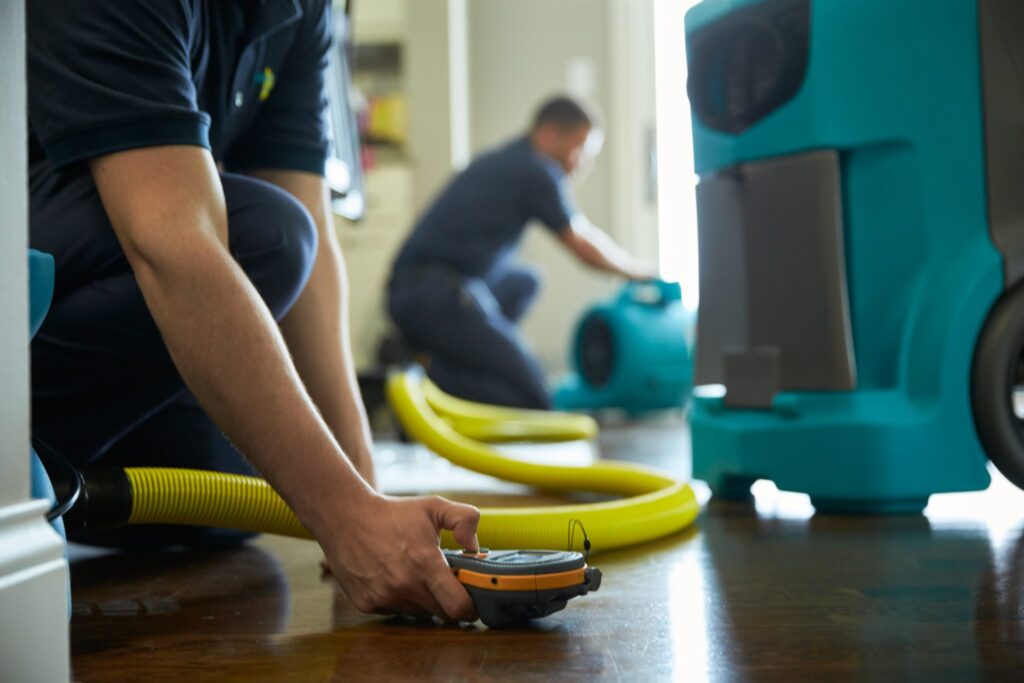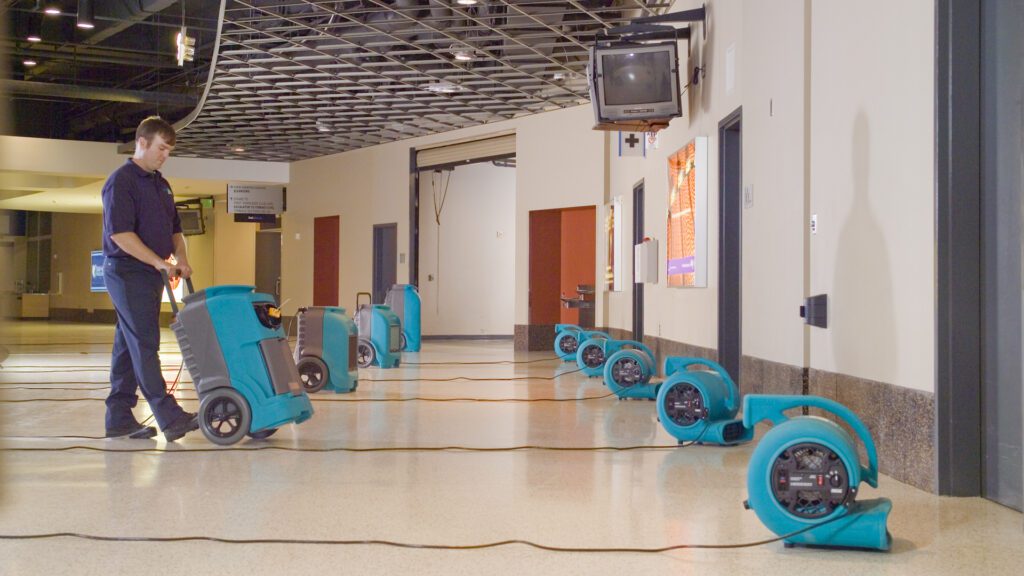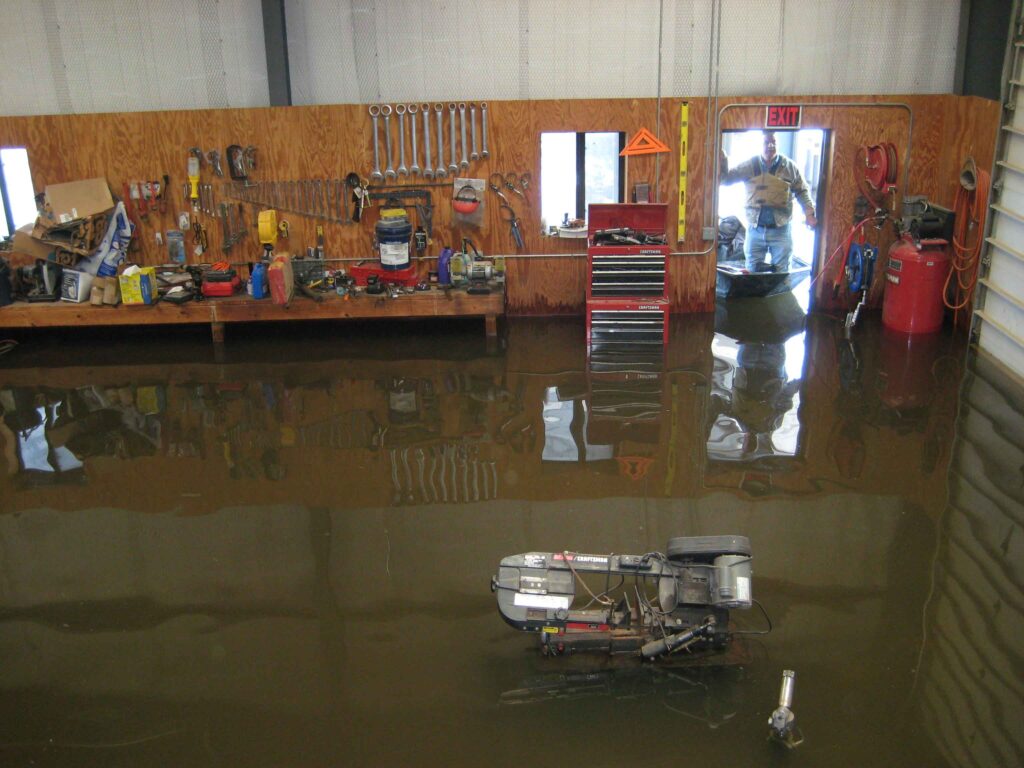Water damage can happen for various reasons, from natural causes to the failure of human-made systems. The excess water’s source determines the contamination level, but, regardless of the bacteria level present, all flooding events require the same service: water damage restoration.
Professional water damage restoration is the act of returning your home to its previous condition, including saving any salvageable belongings.
This article will highlight what you can expect during the water damage restoration process and answer common questions potential clients may have about the service.
Water damage restoration includes extracting all excess water from the area and salvaging all possible belongings. It must happen quickly after the water disaster, so mold spores don’t have the chance to take hold and grow in the excess moisture.
There are three categories of water damage:
Water damage restoration is more than just drying out pools of water. It also involves drying out materials that absorb water and identifying which materials, like carpet and drywall, are soaked beyond repair.

The key to successful water damage restoration is acting quickly after the disaster occurs. The longer the water lingers on the surface or is absorbed in the materials, the greater likelihood for mold and bacteria proliferation.
The five water damage restoration steps are:
The first four steps are what’s known as mitigation—limiting the amount of damage incurred from the disaster. Water damage restoration starts with the mitigation process and continues through the final step, the restoration.
Let’s take a look at each of the steps in detail.
During this step, water damage experts identify the water source and assess the extent of the damage. This step includes categorizing the water—essential data for everyone who comes in contact with the water.
The experts measure the water levels using advanced technology and determine how much is absorbed in the surrounding materials, such as carpet or drywall.
The inspection and assessment conclude with a report of the damage and projected estimates for costs and schedule.
The first part of water removal is getting rid of the standing water. This water carries the highest risk of mold and bacterial growth.
Advanced technology comes into the fore again—industrial-strength pumps and vacuums absorb all standing water from the area quickly and efficiently.
During this step, experts determine whether the flooring will sufficiently dry or if it requires removal.

It may seem that drying occurs during the previous step, but the drying in this step affects the various materials affected by the water damage, such as furniture. While the room may look water-free after the water removal step, many surfaces will still contain excess moisture.
Any soaked surfaces have a high chance of mold growth and can also experience warping.
Specialty dehumidifiers pull the moisture from the room, which gives the water absorbed into the materials the chance to evaporate. Consistent checking of the moisture levels informs professionals when the room is ready for the next step.
After the removal of as much water and moisture as possible, the cleaning stage begins. Water damage restoration experts use several techniques, dependent on the surface, to remove bacteria and mold spores from the various affected surfaces.
The category of water damage comes into play during this step; personal protection depends on the water’s source. Before this step, specialty machines perform most of the work.
The industry-standard certification, the Institute of Inspection Cleaning and Restoration Certification (IICRC), ensures professionals perform this step with their safety and the safety of future occupants in mind.
Restoration and repair is the final step in the water damage restoration process. It depends on the scope of the water damage incident and can vary widely in both cost and time to completion.
The property is brought back to the previous condition by the end of the restoration step. Damaged materials are repaired, and those that can’t be salvaged are replaced and installed.
The best-case scenario is when the same company handles both the mitigation and restoration processes. It saves time and keeps costs low. ER Contracting takes care of the entire water damage restoration process, ensuring a seamless transition back to full functionality.
From start to finish, water damage restoration typically takes anywhere from three days to two weeks.
Multiple factors result in such a broad range. The first is the category of the water that caused the damage. Restoration after clean water incidents is simpler than greywater, and greywater simpler than blackwater.
The second factor is the extent of the damage. Restoration from a burst pipe that affects a portion of the ceiling and surrounding drywall will take longer than a simpler washing machine overflow. A large-scale sewage backup event can push the expected timetable to the highest end of the range.

The process of water damage restoration utilizes advanced technology and educated professionals to remove water after a flood or leak quickly. There are three categories of water that cause water damage; the worst of these puts your family at risk of infection.
When choosing your water damage restoration professionals, the single most crucial aspect is hiring a team with the IICRC certification. This designation means they know how to safely restore your property, with both theirs and your well-being in mind.
ER Contracting is IICRC certified. Our team of water damage restoration contractors services the Houston, Texas area and surrounding suburbs. If you experience water damage and want to protect yourself and your loved ones from bacterial and mold growth, give us a call or reach out via our contact page and schedule your free estimate!